12 before-and-after photos show changing Saint John over 150 years
We're all part of history — and history is part of us.
If you need a reminder, take a stroll around the streets of uptown Saint John.
Canada's oldest incorporated city has had a long, interesting life before us, and that will likely continue many years after we're gone.
The CBC's Julia Wright combed through the digital archives at the New Brunswick Museum and re-created them to illustrate how the city has transformed over 150 years — and how much has remained the same.
1. Market Slip
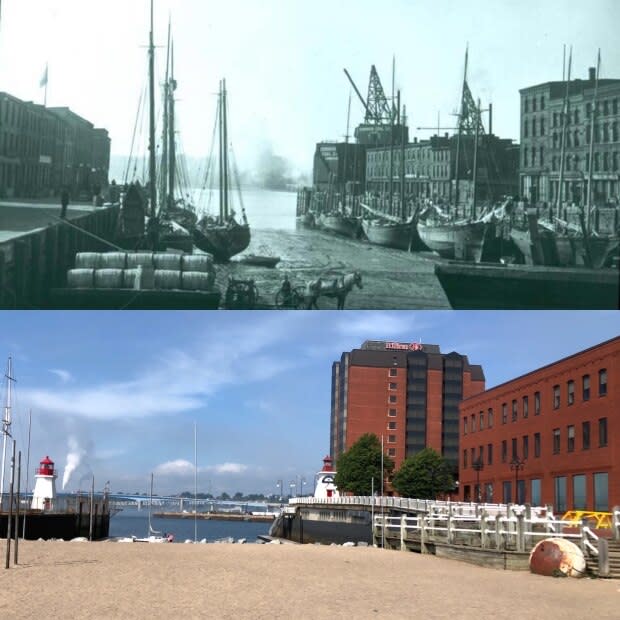
In 1900, Saint John was the economic centre of the province — and Market Slip, pictured here at low tide, was a hive of activity.
Both sides of the wharfs were lined with stores and businesses. At the bottom of the frame, a sloven driver unloads barrels from the sailing vessels tied to the wharves.
While the original buildings that lined the piers have been demolished, the original brick facades of some were incorporated into the construction of the Market Square boardwalk in the 1980s.
The name "slip" refers to a space between two piers for docking boats. On July 17, 2020, the City of Saint John completed a major dredging project along this part of the harbour, making it a functional slip again for the first time in years.
2. Prince William Street
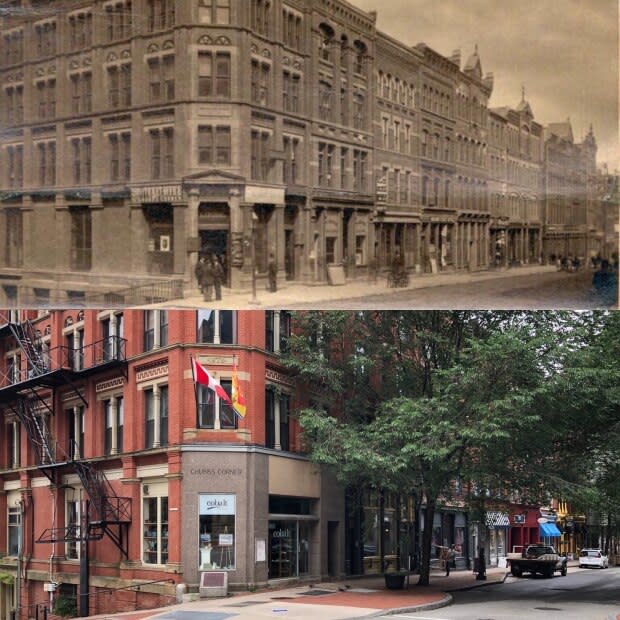
When an unknown photographer snapped this photo of Prince William Street between 1880 and 1885, what are now some of Saint John's grandest old buildings were less than a decade old.
Chubb's Corner, pictured, is named for printer, newspaper publisher and politician Henry Chubb, whose reading room was a popular gathering place for businessmen like those in the picture.
The 16 carved sandstone faces decorating the building are famous now — but they were wildly unpopular when first unveiled in 1878.
A newspaper editorial declared the building "highly disfigured by these meaningless heads, which stand boldly out in all their ugliness."
Disfiguring stone carvings aside, Prince William Street was declared a National Historic Site in 1981.
3. Charlotte Street

Amazingly, this 1898 view of Charlotte Street, looking south from Coburg, captures several storefronts still standing in 2020 — including the present-day R Bar and Jones Gallery at the corner of Charlotte and Union.
"You can see the women wearing long skirts and hats, out in the street walking in the mud. Note the little gutter running down the side of the street — with all the horses, everything would be shoveled in and washed down the street," said Peter Larocque, Curator of New Brunswick Cultural History and Art at the New Brunswick Museum. The photographer was 20-year-old Frederick Doig, born in Saint John in 1875 — an amateur who developed all his own negatives and prints.
Doig's photos are "fascinating [because] they were things that interested him as a young person just before the turn of the century," said Larocque.
After his death in 1949, his son James donated his father's collection of some 120 negatives to the New Brunswick Museum.
4. King & Germain
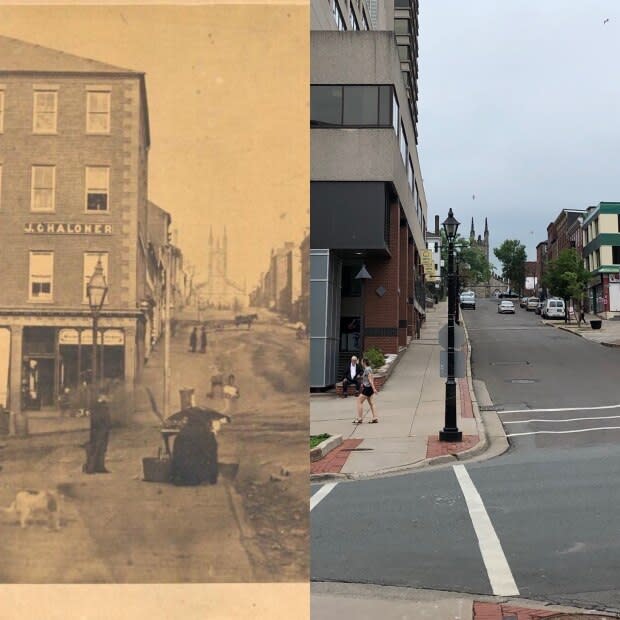
This "incredibly rare" street scene taken between 1860 and 1865 captures the corner of King and Germain, looking north toward Stone Church.
The figure in the foreground is "an apple-seller," said Larocque. "There would have been a number of vendors who would have sat on the corner selling apples, and this is one of them — with her head shaded by an umbrella."
"We know the photograph was taken on a sunny day," said Larocque. "You can see a pole on the opposite side of the street casting a shadow along the sidewalk."
Nearby, a little dog is blurred by movement due to the long exposure time. A horse stands waiting in the middle of Germain Street, likely transporting goods to or from the street market stalls that predated the City Market, built in 1876.
The City Market remains in operation in 2020 — one of the oldest continuing farmer's markets in Canada.
5. Germain Street
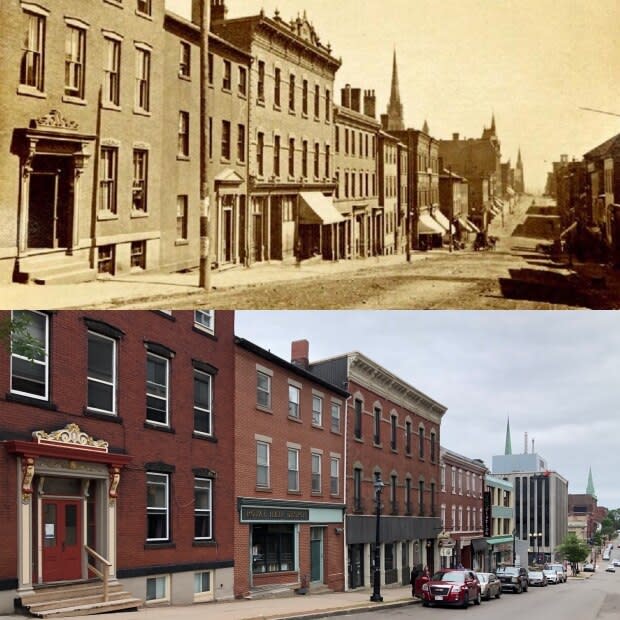
Perhaps the most remarkable thing about this 1880 photo is how little most of the block appears to have changed in 140 years.
The majority of the buildings captured by photographer John Saunders Climo are still standing — including the ornate carvings above the door at 8 Germain.
6. The Old Maritime Bank
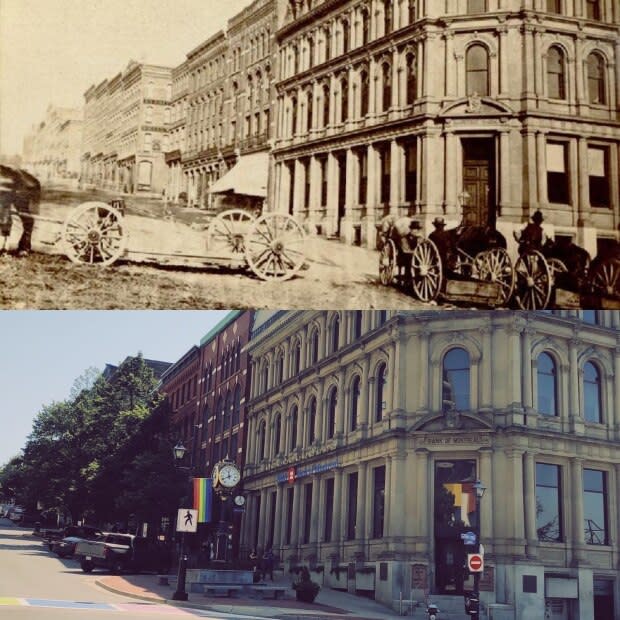
This stereograph proof from 1880 looks up King Street from Market Slip — with the Maritime Bank dominating the frame.
In the foreground are slovens: low-slung wagons designed to be loaded with barrels and other cargo.
When ships came in,"slovens would line up to unload the cargo and take them to the various shops around the city," Larocque said.
"This one is interesting because there is a technical fault with it. [The photographer] has moved the camera or the camera has jiggled a bit, and the buildings on the left side are blurred."
Nearly a century and a half later, the building continues to operate as a bank.
7. Queen Square

The trees have grown up considerably over Queen Square since Frederick Doig captured this glass dry plate negative in 1898 — but the view of Mecklenburg Street remains the same.
Visible in both photos is the distinctive round tower of Thomson House — a mansion built for shipping magnate Robert Thompson circa 1895. Thompson, a commodore at the Royal Kennebecasis Yacht Club, died in the house in 1914.
His house is now a hotel operated by Chipman Hill Suites.
8. Prince William Street
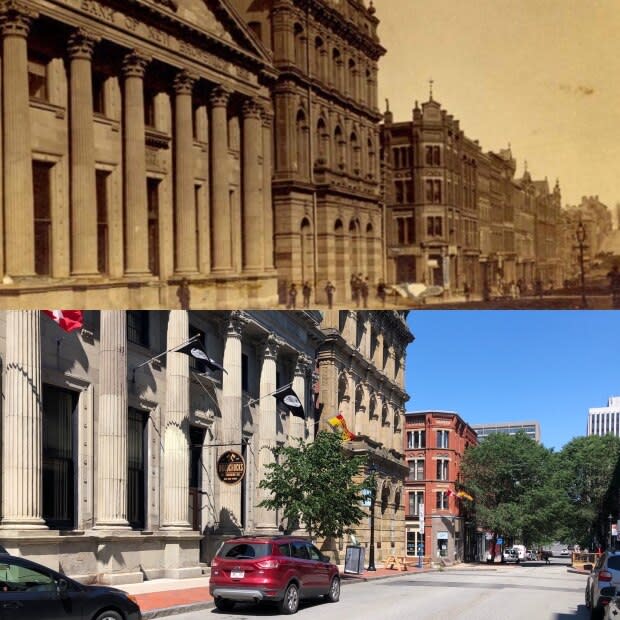
This 1885 shot is "Prince William Street in its heyday," said Larocque.
After the entire block, and indeed most of the city, burned in the Great Fire of 1877, Prince William Street was rebuilt from the ground up — including the stately Bank of New Brunswick and Post Office buildings pictured here.
This is clearly an amateur photo.
"You can see he hasn't set his camera up quite right, so the buildings are all slanting backward." Larocque said.
9. Germain Street
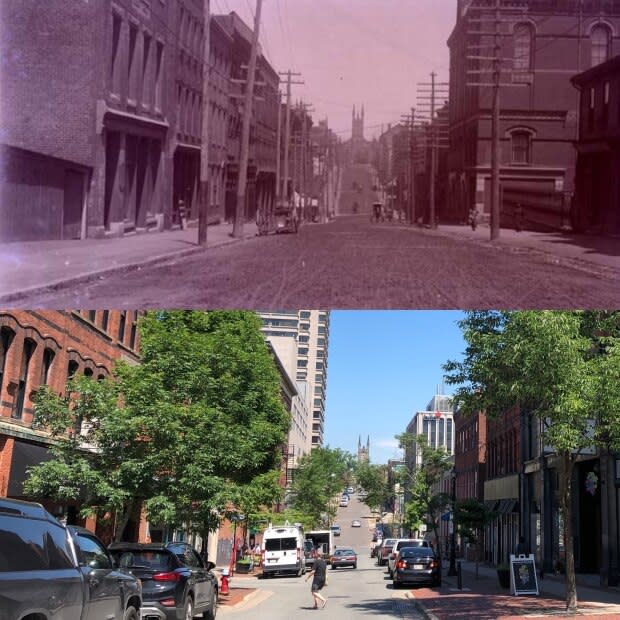
This 1898 dry plate negative is another amateur photograph by Frederick Doig.
Unlike Isaac & Erb and other commercial photographers, Doig didn't care about selling his work, or showing the city to its greatest advantage.
As a result, "we are getting views that we would ordinarily never see in professional photos. The street doesn't look as though it's paved. You have electrical and telegraph poles running up and down the street."
10. The Old Post Office
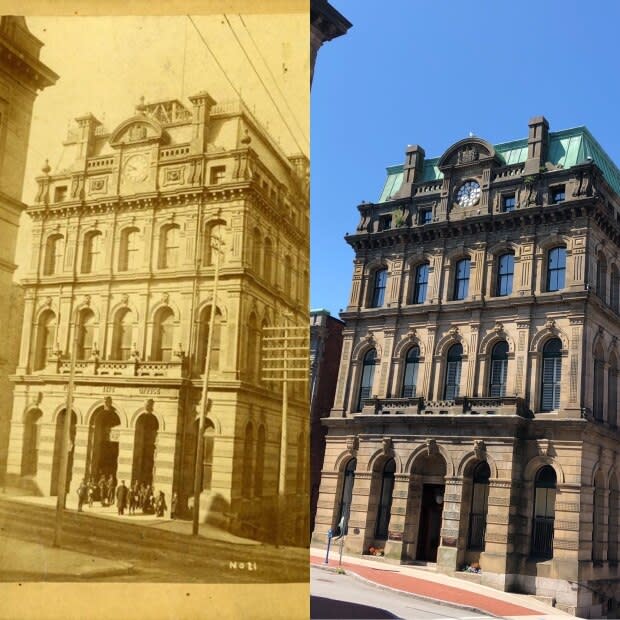
A 1890 photo by Charles Givan — a photography assistant in the Climo Studio who later moved to Sussex and started a theatre business — shows a group of boys gathered in front of the building on the corner of Princess and Prince William.
It's possible that these children were "involved in some aspect of postal delivery," said Larocque.
"It could have been a spot where the newspaper boys gathered."
11. Carleton Street
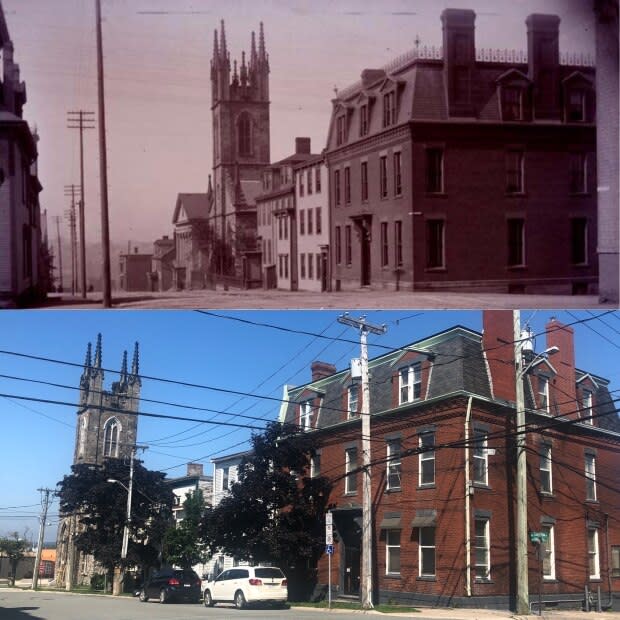
This 1898 shot of Carleton Street by Frederick Doig is "a fascinating photo," said Larocque — because it captures a key antecedent of the New Brunswick Museum.
To the left of the church is the Greek Revival roof of the Mechanic's Institute — where the great poet and author Oscar Wilde once stopped on his North American lecture tour, and other great minds of the day gave public lectures and scientific demonstrations.
Before that, it housed the Gesner Museum, which opened in the 1840s and housed almost 4,000 specimens, many of of them still in the New Brunswick Museum's collections.
The Mechanic's Institute is long gone. But Stone Church, and the residential brick building on the corner of Dorchester and Carleton remain, although the latter has lost its decorative iron roof cresting.
12. The Loyalist Burial Grounds
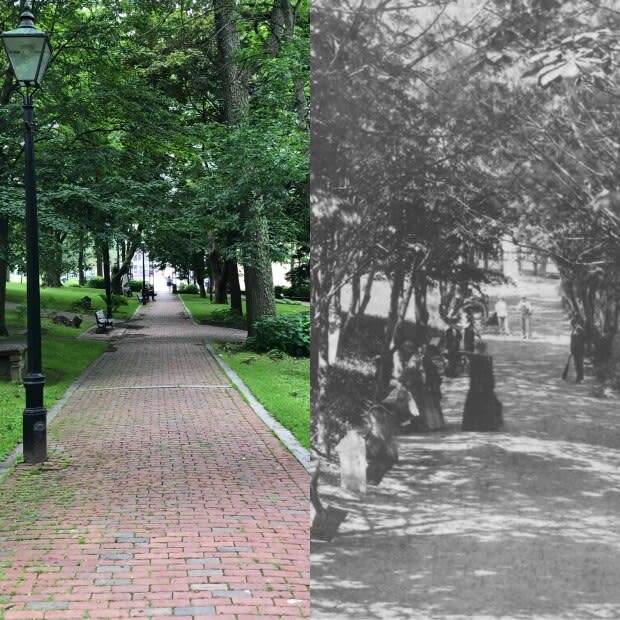
In Victorian Saint John, the burial ground was the "necropolis" — a city of the dead within the city itself.
"In Victorian culture, death is extremely important because it was so present," said Larocque.
Just a few decades before this photo was taken in the 1860s, the Loyal Burial Grounds were full to capacity — and Fernhill Cemetery was founded on what was then a sprawling tract of rural farmland belonging to the Gilbert family.
After a major restoration in the 1990s, the Loyalist Burial Grounds serve almost the same function they did in the Victorian era — as "a park within the city limits with benches, trees to provide cover, and a sense of calm within the city," Larocque said.

